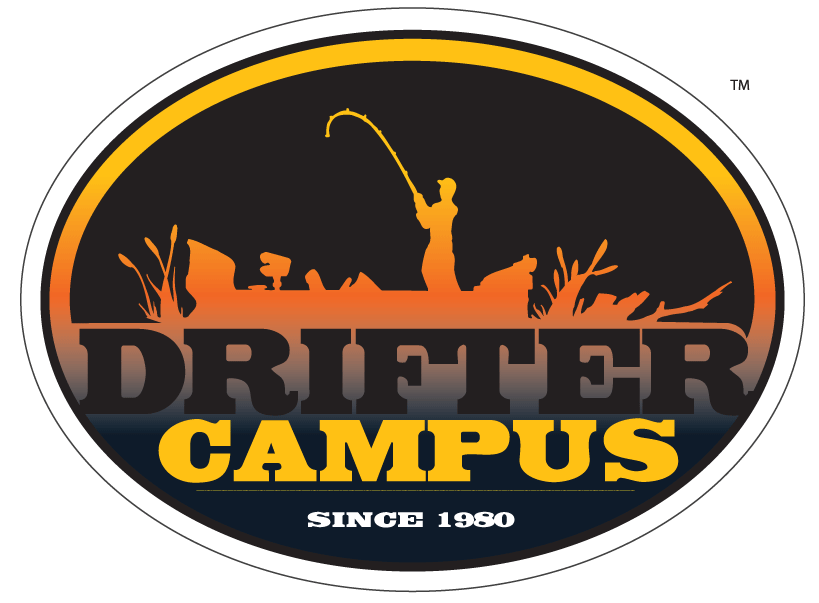Hi Folks. Sure hope your season has gone well so far-complete with big fish and smiles.
What I want to talk about in this column is fishing ‘out there’,you know,the ‘open water’thing.Some of you have been doing it since opening day,some are thinking its time to try it out there,and some I suspect have never tried it,or have,but without success and have no intention of seriously trying it again.Regardless of what category you’re in,I suspect all of you at times have concerns about how random it seems when fishing out there.How much water there is,how little‘structure’there appears to be,in reality how futile it seems..Well,lets take a closer look at that and see if we can’t crank(no pun intended)your confidence level up a notch or two.
First a few threshold concepts:
1.Clear your mind a little with regard to what structure is-or isn’t.Don’t get hung up in meaningless terminology-ie,whether structure is just traditional hard things like points,reefs,weeds,breaklines,etc;or non-traditional like current,weather,moon phase or bait;or whether’edges’are structure;or are comfort zones structure;and on and on.Forget it.As I’ve said before,if fish relate to it or are affected by it,consider it structure and move on.
2.Remember,species don’t survive by random movement.Fish are related to structure out there,its just that we have trouble finding much of it.Understand we are conditioned to throw at or troll around structure and the sense of futility is fed by our difficulty in locating what structure exists out there.
3.There are two keys to finding fish out there.One is eliminating as much sterile water as possible(shrinking the box).The second is combining as much structure as we can identify while out there and focusing on those ‘busy’areas.
First lets focus on eliminating some water.Every body of water will have certain key areas’out there’that are consistently good.For years I’ve called them golden triangles just because my best area in one of my favorite open water lakes was roughly a half mile square area between 3 pieces of traditional structure that formed a triangle.Whatever you call these consistent hot spots,all lakes have them but how do we find them short of fishing everything out there?What follows are my ideas on how to eliminate water and find these spots.
1.Consider what I just said regarding my favorite spot.A logical area to consider is between and/or adjacent to good traditional structure.If you have a great point or weedbed and a quarter or half mile out in the lake you have a favorite reef,isn’t it likely the open water between should be fished?The same can be true with respect to deeper traditional structure such as isolated humps IF they appear to have the consistent bait I’ll discuss next.
2.Pay attention to your electronics and the birds to monitor‘bait’whenever you are on the water.You will eventually find areas that consistently hold the heaviest bait concentrations and these almost undoubtedly will be some of the key open water areas on that lake.Thats nearly guaranteed if there happens to be fairly consistent current(natual or wind induced)in the area as well.(ie,the open water areas on each side of good saddles or above or below neck down areas on larger bodies of water.)
3.Speaking of current,I believe it plays a huge role here.It affects bait distribution,temperature and oxygen distribution,and lord knows what else but the open water areas adjacent to my favorite current areas are solid winners.A separate article in itself but see and reread the two part article on current in Esox Angler last year by Pete Maina and I if you’re unsure of what areas I’m talking about.
4.So far we’ve looked at the body of water in a horizontal fashion.Where should we travel to and focus our attention while on this lake?However,equally important,we should consider the body of water in a vertical sense if our goal is to eliminate sterile water.If the lake is 100 or more feet deep and you have to be concerned with only the top 10,20 or 30 feet did you eliminate some water?Lots!Likely the bulk of it.
THINK and err SHALLOW out there.I gave a series of seminars on this subject this past winter and hopefully some day I’ll finish the book I’m working on where this will be covered in detail but my theory after all these years is that 99% of the muskies are shallow 99% of the time.By ‘shallow’ I mean they rarely if ever are below what I’ll call the photo zone,the zone or depth wherein there is sufficient light penetration to allow photosynthesis to take place.Briefly,and somewhat oversimplied,that’s a depth approximately twice the secchi disc reading on a given body of water.Light penetrates further but in an amount insufficient for the creation of life.This zone therefore is easily ascertainable.Maps,the internet or your DNR can give you this secchi depth or determine it close enough on your own by dropping a white object(I use a white anchor)down until it disappears.Measure that distance,double it,(add a few feet if you’re skeptical)and then don’t fish below it.Ever.If its 10 feet,double it to twenty,and ignore totally the 60,80 or 100 feet below that.Because of the location of a muskies eyes, feeding habits,and some points that follow I’d urge you to err shallow if anything.
Support for my theory?Lots beyond my personal experiences accumulated over the years which I’ll not discuss here because of space constraints.
First consider that this zone is where the meaningful food chain lives most of the time.From photoplankton to zooplankton to ciscoes or whatever,that’s where its at.As Dan Cravens article in the last issue and the installment in this issue points out,even ciscoes are shallower than we thought and even if they go deeper,almost all sub species rise to this zone tofeed. Necessarily.Guess who’s waiting for them to come to dinner?Perhaps waiting in that ‘twi light’zone of murky,light deprived water which Gord Pyzer has written about that really is the bottom of the photo zone.(studies suggest big pike utilize this zone to ambush prey silhouetted above-think muskies do?I do and my trolling records confirm it.
Next consider a muskies ‘comfort zone’.We can quibble whether its 68 degrees or 72 degrees but regardless,their comfort zone in terms of temperature,unlike big pike or trout ,is clearly within this photo zone.If you wish,ignore telemetry studies that show they are never below this zone pre turnover,dismiss the phenomenom of muskie porpoising on the surface regularly,forget the big ‘swim bys’we all see while fishing away but get real,why in the world would the king(queen)of freshwater fish leave their comfort zone when their food is there as well.Stay shallow-eliminate sterile water.
Okay lets talk briefly about the second key to finding fish out there-combining structure.
Actually we really can’t ‘combine’it,that is create it or move it around but we can all develop a thought process of trying to recognize and be aware of as much ‘structure’as possible being present at a given time and place.The more present,the better our odds of fish contact.’Busy’places are fish places.By way of anology consider a traditional point in your favorite lake.Points are often great fish spots but a plain old barren point is not very exciting-particularly on say a cool,sunny,calm day.Now though add a weed bed and a little wind.Better?Add a few boulders,some baitfish and dusk coming-or thunder rumbling in the distance.Now better?For sure.In the open water context we may not have hard traditional structure to focus on but we can still try to recognize and’combine’as much structure as possible.Look for open water‘complexes’if you will.
Well can we really do this out there?Sure,to an extent.Key structure out there like current,water temperature,oxygen levels that fish are relating to may be difficult or nearly impossible to ascertain meaningfully with existing technology but you can try.For sure you can find and focus on bait-or consistent bait areas-that likely are telling you a lot about temp,oxygen and current anyway.Bait,as structure,is as good as it gets out there absent actual muskie sightings or contact.But there’s a lot more.Wind(often chaos and turmoil exists out there as well),solar/lunar phases,weather(anticipate and use it),dawn and dusk(light changes),in short lots of things that affect fish,and which to me is therefore structure,are recognizable and combinable with some thought.
Finally you have two critical structures out there nearly as important in my view as bait.The surface(busiest place there is for big muskies-where extremes of noise,temp,wind and water movement,light,oxygen etc are at their greatest)and the bottom.Not the sterile actual bottom,but the bottom of the photo zone,that murky light deprived twi lite zone where muskies can quite easily ambush prey above or prey coming through to get to the meaningful food zone.
Weather, light conditions,bait depth and other ‘structure’present,often will suggest whether to focus on the surface or just above that bottom,but its hard to argue with keeping it simple and focusing on one or the other.If two or more are in the boat,try both.
Well folks,hopefully this has made some sense and you’ll agree its not futile out there,that there really is less area and water than you thought to concentrate on,and that with some thought on your part there can be method to the madness of going ‘out there’.
Catch-and release-the fish of your dreams this fall!
Remember: thinking is just being thoughtful.
See you next issue.
Dick
Copyright Dick Pearson – 2008







